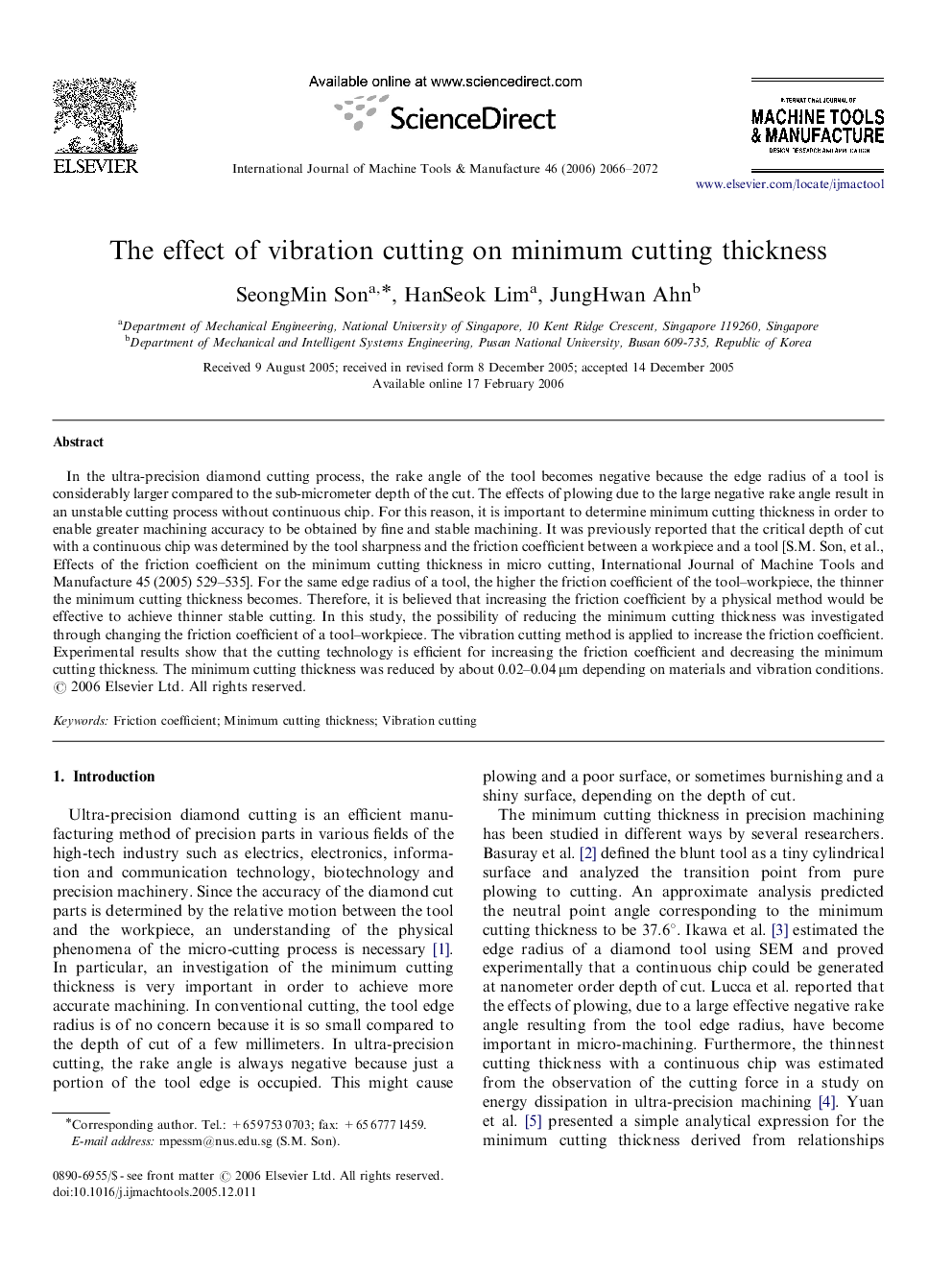| Article ID | Journal | Published Year | Pages | File Type |
|---|---|---|---|---|
| 781214 | International Journal of Machine Tools and Manufacture | 2006 | 7 Pages |
In the ultra-precision diamond cutting process, the rake angle of the tool becomes negative because the edge radius of a tool is considerably larger compared to the sub-micrometer depth of the cut. The effects of plowing due to the large negative rake angle result in an unstable cutting process without continuous chip. For this reason, it is important to determine minimum cutting thickness in order to enable greater machining accuracy to be obtained by fine and stable machining. It was previously reported that the critical depth of cut with a continuous chip was determined by the tool sharpness and the friction coefficient between a workpiece and a tool [S.M. Son, et al., Effects of the friction coefficient on the minimum cutting thickness in micro cutting, International Journal of Machine Tools and Manufacture 45 (2005) 529–535]. For the same edge radius of a tool, the higher the friction coefficient of the tool–workpiece, the thinner the minimum cutting thickness becomes. Therefore, it is believed that increasing the friction coefficient by a physical method would be effective to achieve thinner stable cutting. In this study, the possibility of reducing the minimum cutting thickness was investigated through changing the friction coefficient of a tool–workpiece. The vibration cutting method is applied to increase the friction coefficient. Experimental results show that the cutting technology is efficient for increasing the friction coefficient and decreasing the minimum cutting thickness. The minimum cutting thickness was reduced by about 0.02–0.04 μm depending on materials and vibration conditions.
